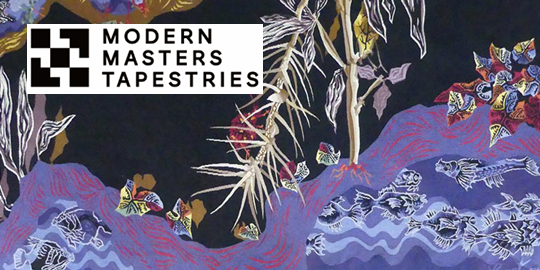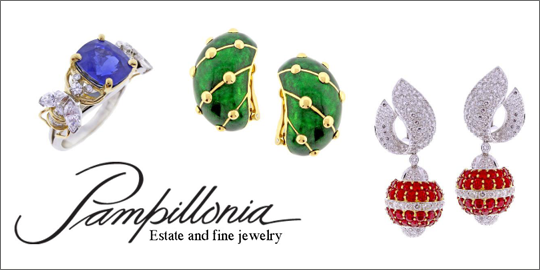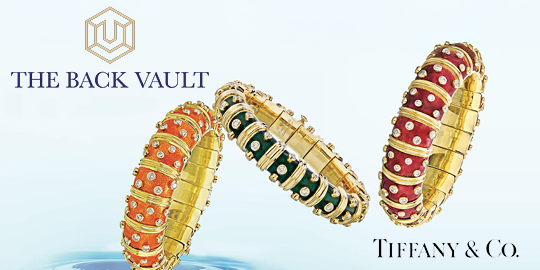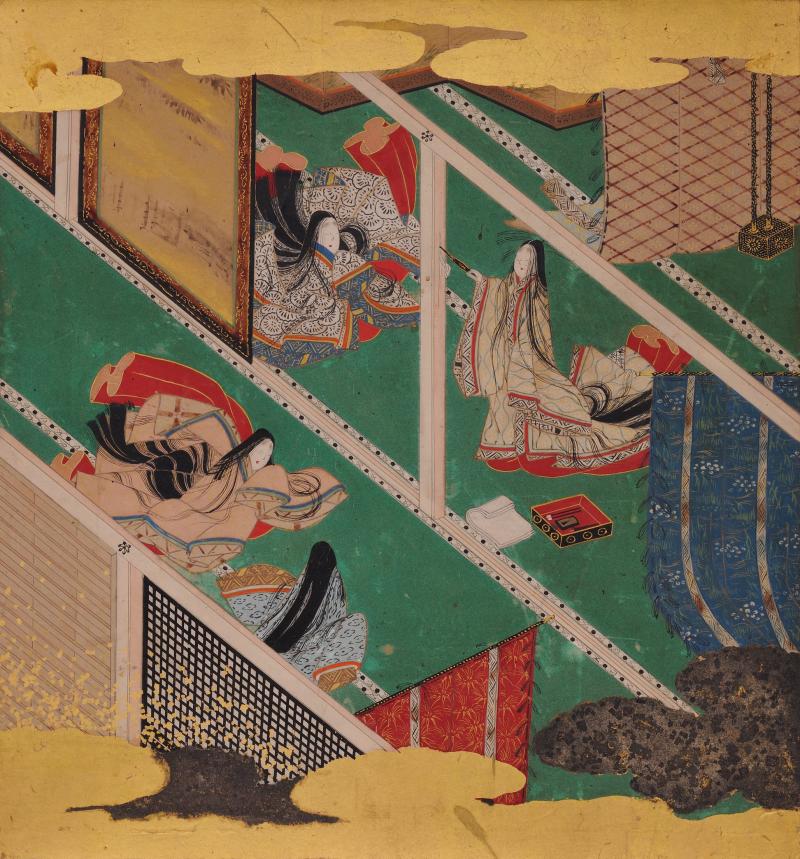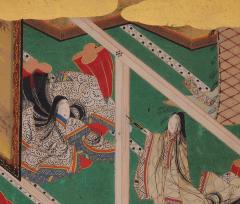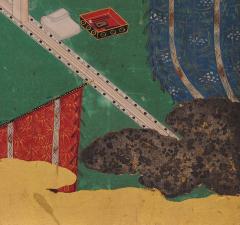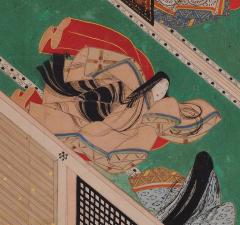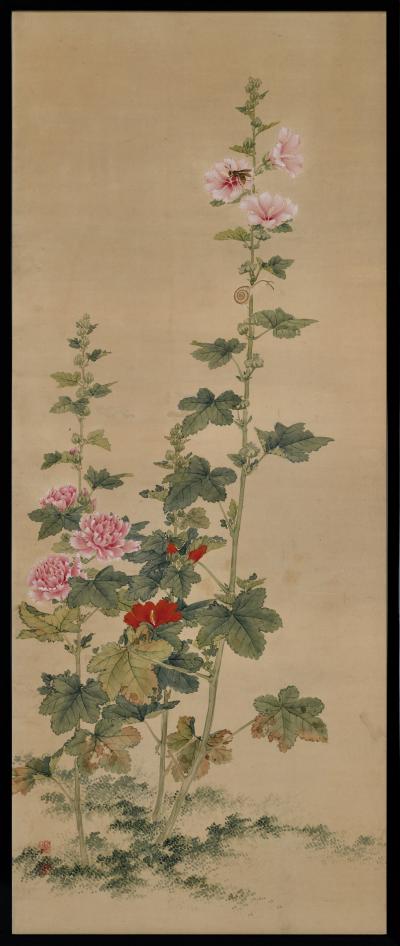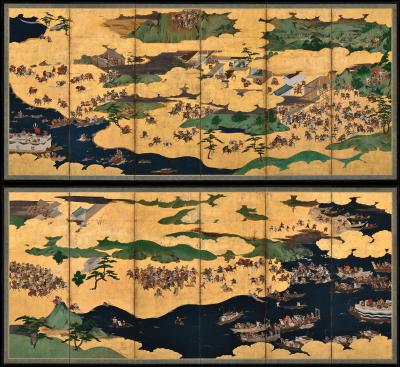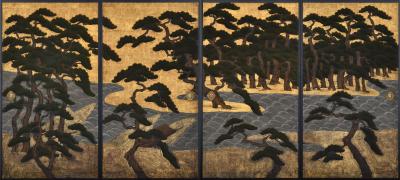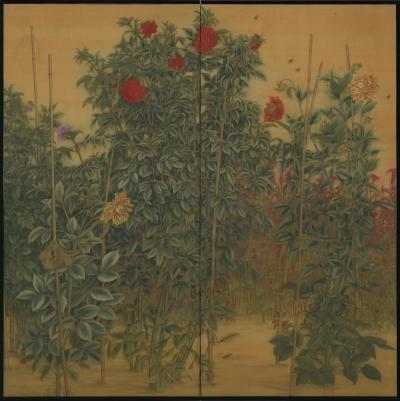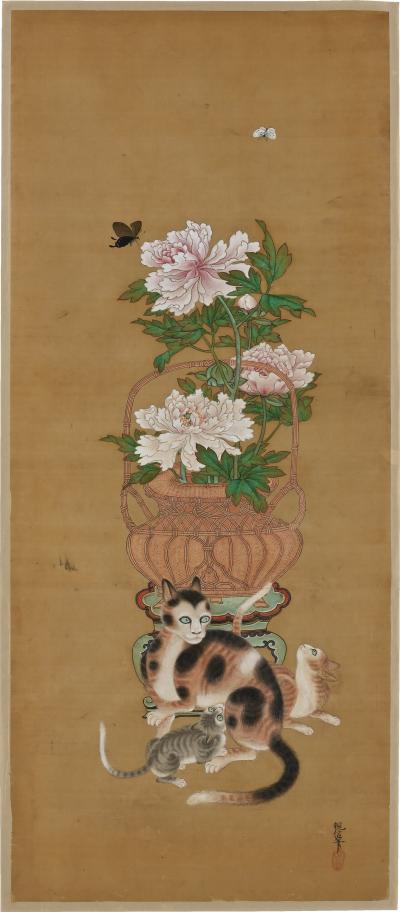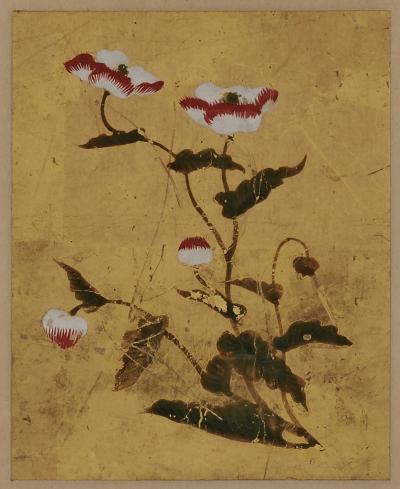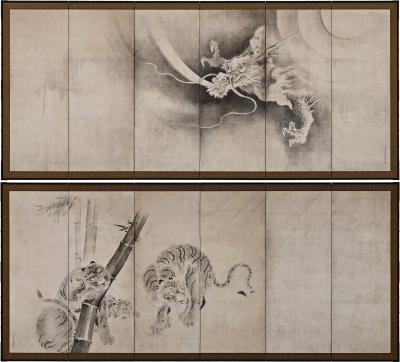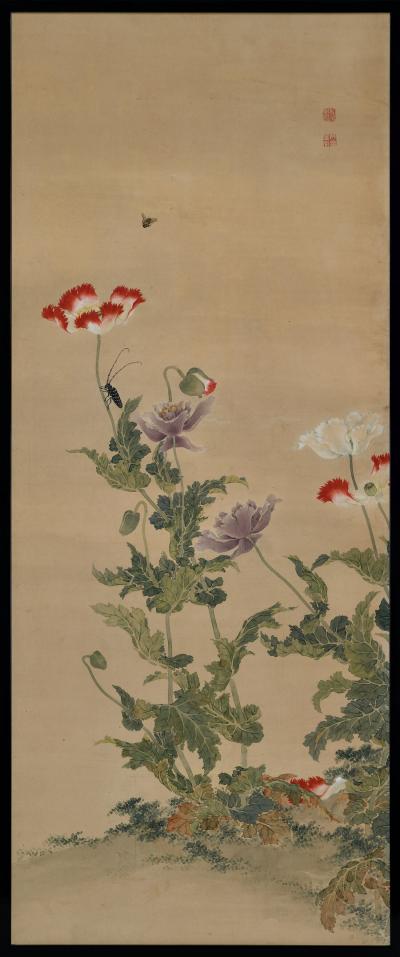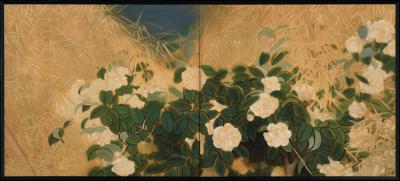Listings / Fine Art / Paintings / Figurative
Tale of Genji 17c Japanese painting. Chapter 31, Makibashira. Tosa school.
-
Description
The Handsome Pillar (Makibashira), Illustration to Chapter 31 of the Tale of Genji (Genji Monogatari)
Tosa School (second half of the 17th Century)
Ink, pigment, gofun and gold on paper.
Unframed album leaf.
Dimensions:
Approximately 17 cm x 15 cm (6.7” x 6”)
Price: USD 3200
During the seventeenth century, Tosa School artists painted album leaves of Genji scenes in miniature. The viewer is rewarded on close inspection with the delicate facial features of the figures, the intricate patterns on drapery and clothing, and the careful depiction of various flowering trees and grasses. Viewed at a distance, the gold clouds and strong lines of the architecture in the different vignettes work together to form a unifying decorative pattern.
Presented here are individual album leaves from an incomplete set, each illustrating one chapter of the Tale of Genji. Exquisitely painted and beautifully preserved, they date to the second half of the 17th century. Roofs are entirely removed from houses to reveal small, doll-like figures within. Delicate flowers and plants suggest the seasons of the year. Surrounded by gilded clouds, these graceful paintings shimmer with uncommon beauty and delicacy.
One of the world’s greatest literary masterpieces and the finest achievement of classic Japanese prose narrative, The Tale of Genji, written by Murasaki Shikibu shortly after 1000 A.D., has provided endless inspiration for Japanese painters throughout the centuries. The Tale of Genji weaves a vivid depiction of aristocratic life in Heian Japan, which centres on the amorous exploits and political gameplay of the nobility.
The word Makibashira forms the chapter title because of its role in the poem that Higekuro’s daughter leaves attached to a pillar when she and her mother move out of Higekuro’s house. “I am leaving now a home that has long been mine: O handsome pillar, you whom I have loved so well, please do not forget me yet!”. -
More Information
Period: Pre 18th Century Condition: Good. Styles / Movements: Asian Art Incollect Reference #: 740536 -
Dimensions
W. 6.69 in; H. 5.91 in; W. 17 cm; H. 15 cm;
Message from Seller:
Kristan Hauge Japanese Art, based in Kyoto's museum district since 1999, specializes in important Japanese screens and paintings for collectors, decorators, and museums worldwide. Contact us at khauge@mx.bw.dream.jp or +81 75-751-5070 for exceptional access to Japanese art and history.







